Wetlands throughout the seasons: summer sights
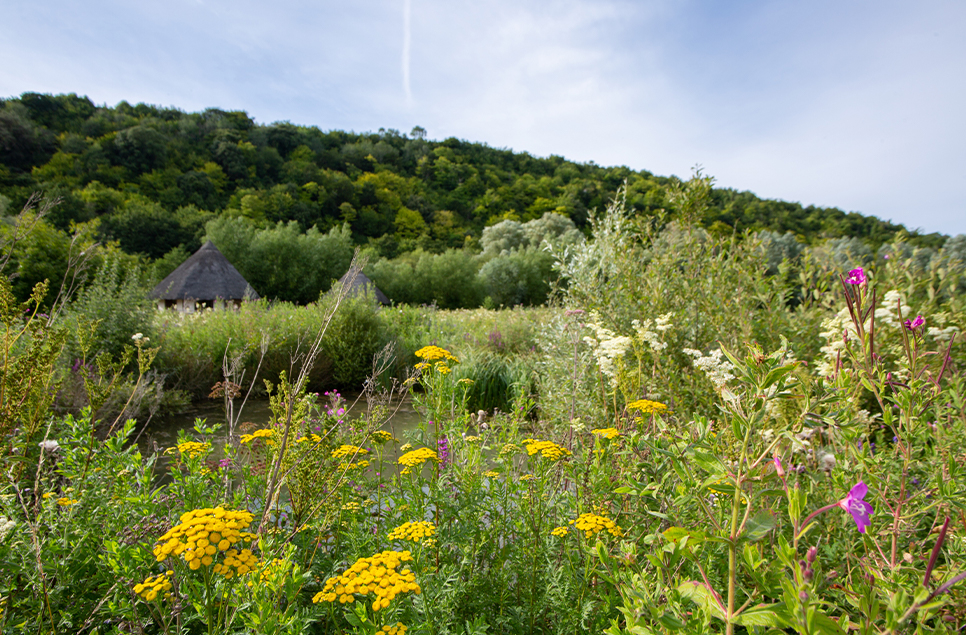
As the mercury rises and the long days draw out over our wetland landscapes, we know that summer is here. Spring bird migration is over but we’re now in the thick of new life emerging, with some real jewels to be seen.
Even the smallest pond can be a magnet for wetland life during the summer months. Having spent months or even years as aquatic, predatory larvae, the nymphs of our dragonflies and damselflies are now emerging. Take a look at the stems of yellow flag iris or bulrush and you might spot these mini-beasts emerging into the daylight, or at least the empty cast that they leave behind once on the wing.
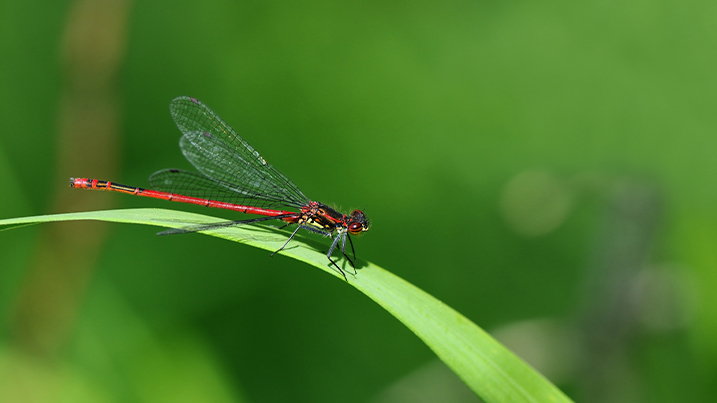
One of the earliest that can be spotted is the hairy dragonfly (a small hawker), patrolling still water bodies, flying at low-level, zig-zagging in and out of the reeds. They have a relatively short flight season, just into July. One of our most widespread damselflies is the large red – they can be seen on the wing as early as March and as late as September.
Another family to look out for are the chaser dragonflies – the four-spotted chaser is widespread and often one of the earliest to be seen. These are superficially similar to the female broad-bodied chaser – but you won’t be confused by the males, which are bright blue! Get out soon because both species won’t be on the wing much after the end of July.
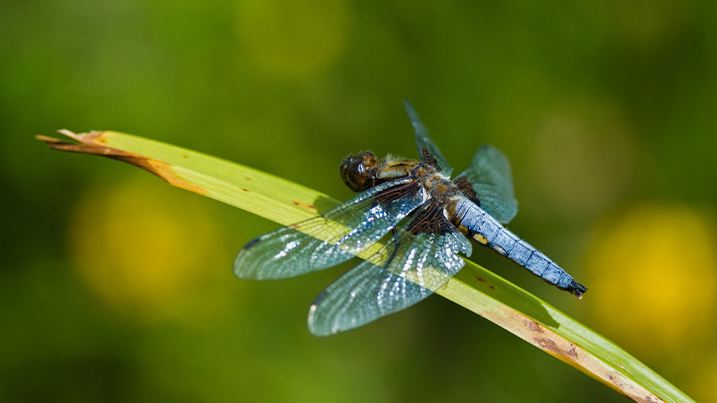
Download a dragonfly spotter sheet
These glittering insects are voracious predators in their own right, but of course provide a welcome food source for flourishing bird life.
June is the month where many of our wetland birds, both resident and migratory, have young hatching out or fledging. This means the parents have got their work cut out with feeding growing mouths; the abundance of aerial insect prey is very welcome.
In amongst our reedbeds, the sedge and reed warblers are busy providing for new families. For a few, efforts might be spent on an imposter – the cuckoo often parasitizes warbler nests, their giant young hatching first, pushing other eggs out of the nest and being fed until many times the size of the warblers. The adult cuckoos themselves are now coming towards the end of their stay here. Some will have arrived in April; come July most will have laid their eggs and will be off migrating south, eventually to winter in central Africa.
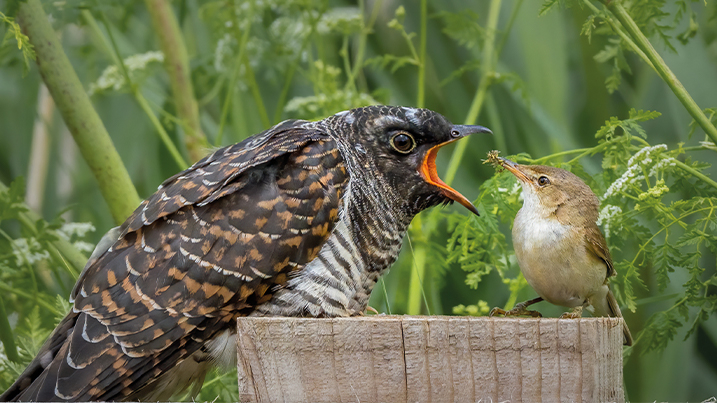
Similarly, now is a time when passage migration begins for birds that breed further north than us – you can pretty much bet on the first returning green sandpiper to be seen in the second week of June. These birds and other waders will most likely be non-breeding birds from Scandinavia and Arctic regions. However, you’re in with a good chance of seeing the young of wader species that have bred on our reserves; lapwing, oystercatcher, avocet and little-ringed plover to name a few. Not to mention the plethora of other waterbird families that will be dabbling, diving, upending, grazing, fishing and flying over the wetlands.
One of those is a special visitor – the garganey – being our only duck species to visit just for the summer breeding season. They are scarce and favour shallow wetlands in the south of England. You’d be very lucky to see a duckling but do keep an eye out – if your local wetland had adults visit in the spring, there’s a chance that they have bred – even if you haven’t seen them in months!
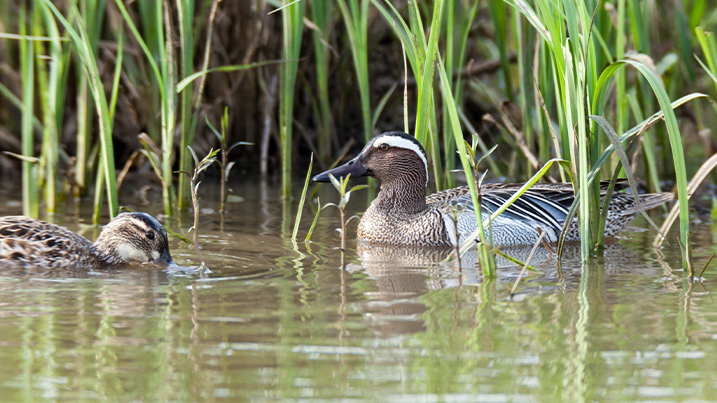
Largely ignoring the avian species that they share their habitat with, mammals such as water voles are territorially guarding their burrows and eating everything they can get their paws on with the lush green plant growth in order to fatten up for winter.
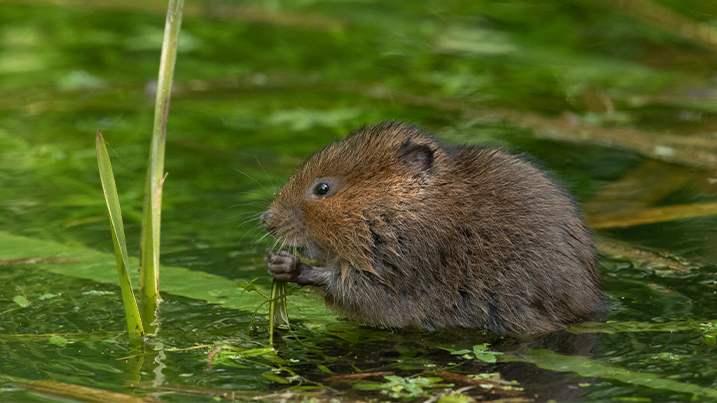
As night falls, another group of mammals emerges to feed. The glut of insect life is a boon for bats; if you’re lucky, the Daubenton’s can be seen scooping up prey from over the water. Sunset is a great time to be spotting bats flitting around, but blink and you’ll miss them.
And how can we wax lyrical on summer wetland life without thinking about the plant species that fill the wetland landscape with colour. Sedges, grasses and bulrushes are now putting on growth and taking in energy that they’ll need later in the year. The bulrush produces new cigars; this is the female flower before the more feathery male flower.
Wet grassland will now be a riot of colourful wildflowers – keep a look out for orchids such as marsh, pyramidal, common spotted and bee.
Summer wildflowers - a quick guide
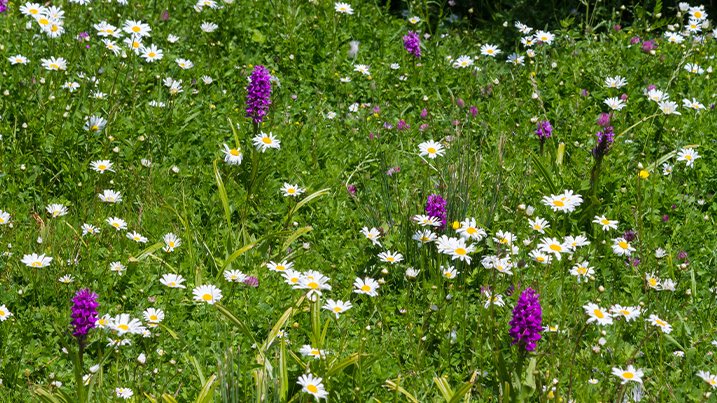
Seize the summer
The summer is the perfect time to get out to your nearest wetland centre and see for yourself the joys it has to offer.
Visit


